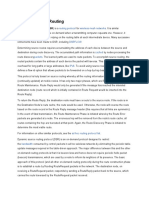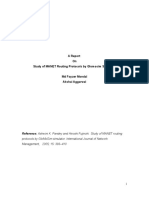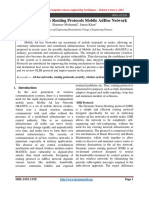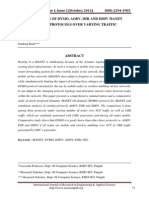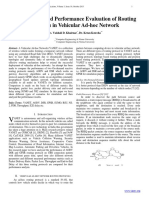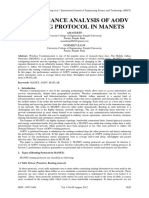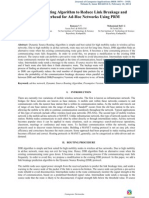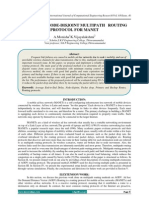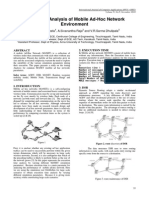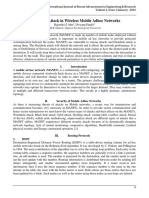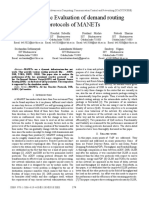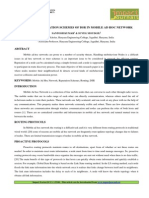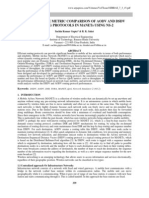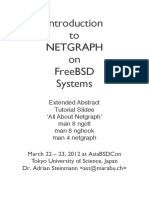0% found this document useful (0 votes)
8 views4 pagesPopular Routing Protocols
The document discusses three popular routing protocols for ad hoc networks: Destination Sequenced Distance Vector Routing (DSDV), Dynamic Source Routing (DSR), and Adhoc On-Demand Distance Vector Routing (AODV). DSDV uses sequence numbers to prevent routing loops and maintains a dynamic routing table, while DSR employs source routing and is designed to minimize control packet overhead. AODV establishes routes on-demand using route request and reply messages, avoiding the counting to infinity problem through the use of sequence numbers.
Uploaded by
fragrancenithiCopyright
© © All Rights Reserved
We take content rights seriously. If you suspect this is your content, claim it here.
Available Formats
Download as DOCX, PDF, TXT or read online on Scribd
0% found this document useful (0 votes)
8 views4 pagesPopular Routing Protocols
The document discusses three popular routing protocols for ad hoc networks: Destination Sequenced Distance Vector Routing (DSDV), Dynamic Source Routing (DSR), and Adhoc On-Demand Distance Vector Routing (AODV). DSDV uses sequence numbers to prevent routing loops and maintains a dynamic routing table, while DSR employs source routing and is designed to minimize control packet overhead. AODV establishes routes on-demand using route request and reply messages, avoiding the counting to infinity problem through the use of sequence numbers.
Uploaded by
fragrancenithiCopyright
© © All Rights Reserved
We take content rights seriously. If you suspect this is your content, claim it here.
Available Formats
Download as DOCX, PDF, TXT or read online on Scribd
/ 4
